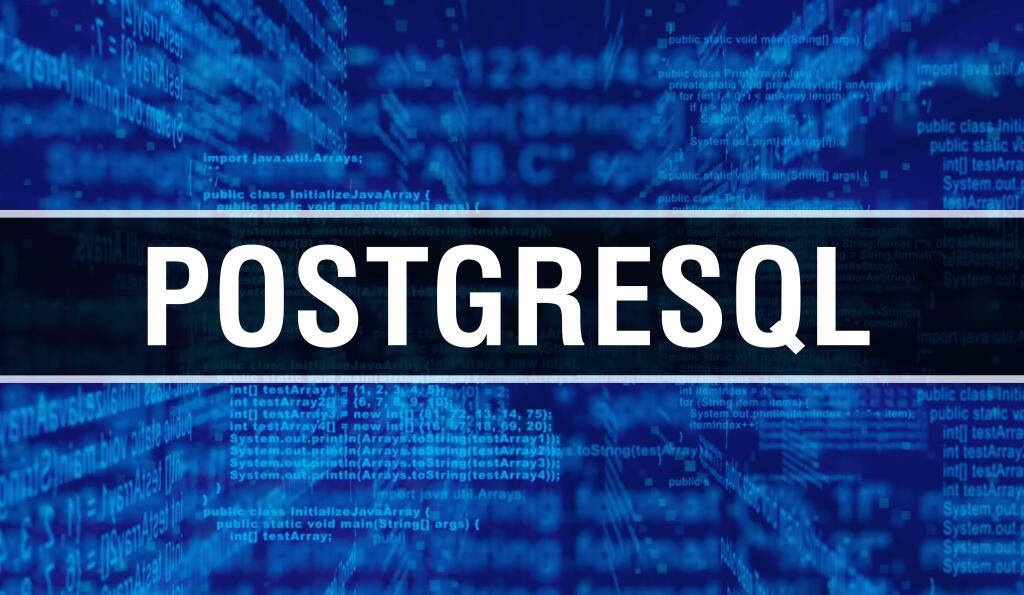Introduction to MongoDB MongoDB Manual
How To Forex Trade For Beginners On Phone?
February 4, 2021What Are General and Administrative Expenses?
May 11, 2021Introduction to MongoDB MongoDB Manual
Content
MongoDB also supports aggregations via the Aggregation Framework. To learn more about the native time series collections and other MongoDB features that make working with time series data easier, check out the Time Series Data article. Time series data is most commonly generated by a device, such as a sensor, that records data over time. The data is stored in a collection of documents, each of which contains a timestamp and a value. MongoDB provides a number of features to help you manage time series data.
_id – This is a field required in every MongoDB document. The _id field represents a unique value in the MongoDB document. If you create a new document without an _id field, MongoDB will https://globalcloudteam.com/ automatically create the field. So for example, if we see the example of the above customer table, Mongo DB will add a 24 digit unique identifier to each document in the collection.
CloudFormation or Terraform: Which Iac Platform Is the Best Fit for You? – InfoQ.com
CloudFormation or Terraform: Which Iac Platform Is the Best Fit for You?.
Posted: Mon, 14 Nov 2022 09:08:57 GMT [source]
It’s a powerful and easy-to-use MongoDB client that makes working with your database easier than ever. Not to mention, it has a few other features that make it even handier, like an integrated MongoDB IDE. Even postgresql has many modern features including though there is no graphical user interface for administering the database, it can still be done by using the mongo shell. The Mongo shell is a great way to access JavaScript and databases for MongoDB.
dbKoda – Open-source, Next-generation IDE for MongoDB
A MongoDB GUI can make working with your database much easier, whether you’re a beginner or an experienced user. The smart search engine not only optimizes MongoDB queries but also understands the intent behind user requests. If you want finer control over your search queries, switch to query mode and write any MongoDB expression. NoSQLBooster provides an all-inclusive GUI for MongoDB, complete with SQL query support, script debugger, server monitoring, and true IntelliSense. NoSQL Booster’s IntelliSense language service is similar to Studio 3T’s IntelliShell and provides completions, collection names, properties, and field names as you type.
- Furthermore, MongoDB has extensive index support that can be used for query profiling, replication, and fail-over support.
- What’s called Table in RDBMS is called a Collection in MongoDB.
- TablePlus is designed to make database management easy, fast, and efficient for users.
- Ad hoc queries function in a way to better the performance and are real-time.
Returns a specified number of elements from the end of an array. Returns the value of a specified field from a document. Returns a specified number of elements from the beginning of an array. Starting in MongoDB 6.0, the enableSharding command is no longer required to shard a collection. Starting in MongoDB 6.0, you can use the operators $in and $orto create partial indexes.
Provides drivers for many programming languages that can be used to write MongoDB applications. One of the benefits of MongoDB over other databases is that it has dynamic schemas, which means that data integration for certain kinds of applications can be done more quickly. Queryable encryption, available in preview with MongoDB 6.0, introduces the industry’s first encrypted search scheme using breakthrough cryptography engineering. This technology gives developers the ability to query encrypted sensitive data in a simple and intuitive way, with zero cryptography experience required. Now generally available, the Atlas Data API lets you read or write data in Atlas using standard HTTPS requests.
Support a wide spectrum of use cases
If the primary server should ever experience a critical failure, any one of the secondary servers can be elected to become the new primary node. And if the former primary node comes back online, it does so as a secondary server for the new primary node. Replication allows you to sidestep these vulnerabilities by deploying multiple servers for disaster recovery and backup. Horizontal scaling across multiple servers greatly increases data availability, reliability, and fault tolerance. Potentially, replication can help spread the read load to the secondary members of the replica set with the use of read preference.

This allows you to do everything in Robo 3T that you could do in the mongo shell. Robo 3T is a MongoDB management tool that allows you to connect to your database and quickly get started with your data. It’s shell-centric and cross-platform, allowing users to work with their data efficiently. The app also provides comprehensive documentation, making it a great resource for learning about MongoDB.
Overview of MongoDB
Indexing – Indexes can be created to improve the performance of searches within MongoDB. This is a human-readable, plain text format for expressing structured data. JSON is currently supported in many programming languages.
Fields are key-value pairs in the documents, it is just like columns in the relation database. The value of the fields can be of any BSON data types like double, string, boolean, etc. The MongoDB database contains collections just like the MYSQL database contains tables.

Aggregation Framework is one of the most efficient features offered by MongoDB. Simply speaking it is a process of creating a pipeline of multiple operations and getting a final result, filtered. The above query will return every index that has been created for the “test” collection. Below is a simple query returning the list of collections in the Database. MongoDB Atlas is MongoDB’s DBaaS (Database-as-a-Service) platform offering that provides a fully managed MongoDB cluster with a dedicated MongoDB instance for each user.
.css-1w632qofont-weight:500;.css-1tdaqiabackground-color:transparent;color:#00ED64;font-weight:500;What’s New
GridFS, which stands for Grid File System, use two separate collections. One collection is used to store the larger file’s chunks, while the second collection is used to store the metadata. When we execute a query for this file, the GridFS will collect and return all the chunks together. GridFS also implements the Indexing, which allows the query execution for returning the file easier. MongoDB has been designed with developer productivity and flexibility in mind. It is a document-oriented database, which means that data is stored as documents, and documents are grouped in collections.
It means that MongoDB isn’t based on the table-like relational database structure but provides an altogether different mechanism for storage and retrieval of data. MongoDB is a document database, which means that it stores data in the form of “objects” which have properties that can be changed, added to, deleted, and queried against. While in an academic sense, MongoDB stores values for keys , it would be a bit of a simplification to call MongoDB simply a key-value database . MongoDB documents can form compact flexible structures to support fast indexing for your key-value stores.

Learn more in this article and try it with MongoDB Atlas, MongoDB’s Database-as-a-Service platform. MongoDB provides replication feature by distributing data across different machines. It can have one primary node and one or more secondary nodes.
So, in order to save an object, you just have to serialize it to JSON and send it to MongoDB. There is no need for type mapping which removes an additional burden. The data stored in the MongoDB is in the format of BSON documents. Here, BSON stands for Binary representation of JSON documents.
HumongouS.io – Modern and Secure MongoDB Online GUI
Modern applications will probably require more than the above, but this is the bare minimum for a key-value store. Documents correspond to native data types in many programming languages. It has an automatic load balancing configuration because of data placed in shards. We will explore more in detail in the later articles.
In this article, you will learn about some key features of MongoDB. There are many awesome features that have made MongoDB so popular. Basically, MongoDB was introduced to overcome relational databases approach and limitations of other NoSQL solutions. And, MongoDB has brought in some more, very important and useful features. MongoDB, being one of the most widely used NoSQL databases, provides a wide range of features and functionalities.
Features of MongoDB –
Keep all your essential data in one place with a birds-eye view dashboard. You get to choose what information you want to include. Collations simplified – User-friendly interface to design your data pipelines – like playing with Lego bricks. Schema Analyzer – Examine the internal structure of a collection for inaccuracies, anomalies, or typos.
Without authentication, anyone can access your data. It offers a variety of options, like a simple on & off switch, or more complex features like a rich text field or an s3 file uploader. No matter what your needs are, HumongouS.io have you covered. The query builder in SQL lets you use the language to run queries on your collections. Different Node.js modules can be imported into the shell for ease, like lodash, bluebird, ShellJS, or moment.js.
When would you use a key-value database?
With Mingo, you’ll fall in love with your data all over again. Data relations are easy to view with Mingo – simply open up a document and preview the data relations directly within it. Plus, if you need to access another document, Mingo will recognize references and let you do so with just one click. Creating a form with HumongouS.io is as easy as one click. It automatically generates a form for each of your collections that you can later personalize with our various form widgets. In addition, there are independent developers who have created excellent open source graphical interfaces.
These new capabilities allow teams to address more application use cases with a consistent developer experience and a more elegant data infrastructure. What are the needs of the application – Look at the business needs of the application and see what data and the type of data needed for the application. Based on this, ensure that the structure of the document is decided accordingly. The data model available within MongoDB allows you to represent hierarchical relationships, to store arrays, and other more complex structures more easily. Starting in MongoDB 6.0, arrays are also compressed as part of thetime series column compression.
